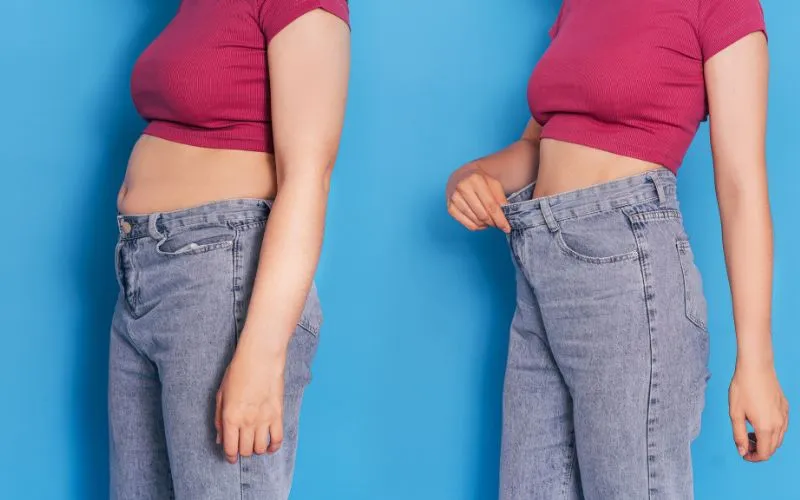- Home /
- Metabolic Confusion Meal Plan: Boost Metabolism and Lose Weight

Posted On:April 25th, 2024
Metabolic Confusion Meal Plan: Boost Metabolism and Lose Weight
The quest for effective weight loss strategies often leads to exploring new dieting concepts like the metabolic confusion meal plan. This approach, also known as calorie cycling, involves alternating between high and low-calorie intake days to prevent metabolic slowdown, a common issue in continuous caloric restriction. Here, we delve into how metabolic confusion can stimulate metabolism and support sustained weight loss.
Understanding Metabolic Confusion
Metabolic confusion is based on the idea that varying calorie intake can keep your metabolism active and guessing. By fluctuating your daily caloric intake, you may prevent the plateau often experienced in traditional, consistent-calorie diets. This approach enhances fat loss while maintaining muscle mass without the feelings of deprivation that come with strict dieting.
Principles of Metabolic Confusion
- Calorie Cycling: Alternating between higher and lower calorie days to stimulate the metabolism.
- Macronutrient Manipulation: Adjusting the ratios of proteins, fats, and carbohydrates to optimize metabolic responses.
- Sustained Energy Levels: By not consistently restricting calories, you may experience better overall energy throughout the diet.
How Metabolic Confusion Works?
The metabolic confusion diet works by alternating your calorie intake, usually weekly or monthly. For example, you might consume 2000 calories on some days and 1500 on others. This strategy can prevent your body from adapting to a single caloric intake level, slowing your metabolism.
High-Calorie Days
On these days, you focus on fueling your body with a higher quantity of calories. You may engage in more strenuous physical activities or workouts requiring more energy.
Low-Calorie Days
Contrastingly, on low-calorie days, you reduce your food intake. These days might coincide with your rest days from the gym or days when you are less active.
Benefits of Metabolic Confusion
Implementing a metabolic confusion meal plan can offer several benefits, particularly for those who have hit a plateau in their weight loss journey.
- Avoids Metabolic Plateaus: The body cannot adapt to a specific caloric level by constantly changing calorie intake, potentially keeping the metabolism high and continuously burning fat.
- Enhances Fat Loss While Preserving Muscle: Alternating calorie intake can help preserve muscle mass while promoting fat loss, especially with an exercise program with strength training.
- Reduces Diet Fatigue: Switching up your calorie intake can make dieting less monotonous and more sustainable, reducing the likelihood of burnout and binge eating.
Setting Up a Metabolic Confusion Meal Plan
To start a metabolic confusion diet, you must plan your calorie intake based on your weight loss goals, current weight, and activity level. Here’s how to set it up:
Calculate Your Caloric Needs
Determine your maintenance calories — the number of calories you must consume daily to maintain your current weight. This can be done using an online calorie calculator that considers your age, gender, weight, height, and activity level.
Plan Your High and Low-Calorie Days
Decide how you want to cycle your calories. Many people choose to have more high-calorie days on the weekdays when they are more active and low-calorie on weekends.
Balance Your Macronutrients
On high-calorie days, include more carbohydrates, especially if you are working out. Increase your protein intake, such as krill meat, on low-calorie days to help with satiety and muscle maintenance.
Sample Metabolic Confusion Weekly Meal Plan
Creating a weekly meal plan can help you stay on track. Here’s an example of what a week might look like:
Monday: High-Calorie Day
- Breakfast: Oatmeal with banana, almonds, and honey.
- Lunch: Grilled chicken breast with quinoa and steamed vegetables.
- Dinner: Salmon, sweet potato, and a green salad.
- Snacks: Greek yogurt, a protein shake.
Tuesday: Low-Calorie Day
- Breakfast: Greek yogurt with a sprinkle of chia seeds.
- Lunch: Salad with mixed greens, cherry tomatoes, cucumbers, and grilled shrimp.
- Dinner: Stir-fried tofu with broccoli and peppers.
- Snacks: An apple, carrot sticks.
Wednesday: High-Calorie Day
- Breakfast: Scrambled eggs with spinach, mushrooms, and a slice of whole-grain toast.
- Lunch: Turkey wraps with avocado, lettuce, tomato, and whole-grain tortilla.
- Dinner: Beef stir-fry with brown rice and a variety of vegetables.
- Snacks: Cottage cheese with pineapple and a handful of walnuts.
Thursday: Low-Calorie Day
- Breakfast: Smoothie made with almond milk, protein powder, and mixed berries.
- Lunch: Vegetable soup with a side of kale salad.
- Dinner: Grilled chicken with asparagus and a side salad.
- Snacks: Cucumber slices with hummus and orange.
Friday: High-Calorie Day
- Breakfast: Pancakes made with oats and topped with fresh berries and a small amount of maple syrup.
- Lunch: Quinoa and chickpea salad with olive oil dressing, cucumbers, and feta cheese.
- Dinner: Grilled salmon with a baked potato and steamed broccoli.
- Snacks: Mixed nuts, a protein bar.
Saturday: Low-Calorie Day
- Breakfast: Two boiled eggs with a side of grilled tomatoes.
- Lunch: Grilled vegetable and goat cheese sandwich on whole-grain bread.
- Dinner: Baked cod with lemon, served with green beans.
- Snacks: A pear, a serving of plain Greek yoghurt.
Sunday: High-Calorie Day
- Breakfast: French toast made with whole-grain bread, served with a small portion of whipped cream and strawberries.
- Lunch: Pasta salad with chicken breast, sun-dried tomatoes, olives, and spinach.
- Dinner: Roast chicken with root vegetables and a quinoa salad.
- Snacks: Dark chocolate, air-popped popcorn.
Tips for Success on the Metabolic Confusion Meal Plan
Adhering to a metabolic confusion meal plan requires preparation and mindfulness. Here are some tips to help you make the most out of this diet strategy:
Prepare Meals in Advance
Meal prepping can help you stick to your calorie goals without the stress of preparing daily meals. Cook in batches and use portion control containers to organize your high and low-calorie days.
Stay Hydrated
Drinking plenty of water is essential for overall health and can help manage hunger and energy levels, especially on low-calorie days.
Monitor Your Progress
Keep track of your weight, body measurements, and how you feel. Adjustments might be necessary based on your progress and any feedback from your body.
Be Flexible
Life is unpredictable, and there might be days when sticking to your planned calorie intake is challenging. Be flexible and adjust your meal plan as needed while staying close to your overall weekly calorie and nutrient targets.
Consult a Professional
Before starting any new diet plan, especially one involving significant calorie fluctuation, it is advisable to consult with a dietitian or healthcare provider. They can provide guidance tailored to your specific health needs and help ensure your diet is balanced and beneficial.
Conclusion
The metabolic confusion meal plan offers a dynamic way to approach weight loss that can prevent plateaus and make dieting more sustainable. This diet keeps the metabolism active by fluctuating caloric intake, potentially leading to more effective fat loss and energy maintenance. Combining this eating strategy with regular exercise and consulting with a healthcare provider or nutritionist to ensure it meets your specific health needs is essential as with any diet. With the right planning and commitment, metabolic confusion can be a powerful tool in achieving and maintaining optimal body weight.
Related Posts
Shop
Products You May Like
Lorem Ipsum is simply dummy text of the printing and typesetting industry
m Ipsum is simply dummy text of the printing and typesetting industry.









